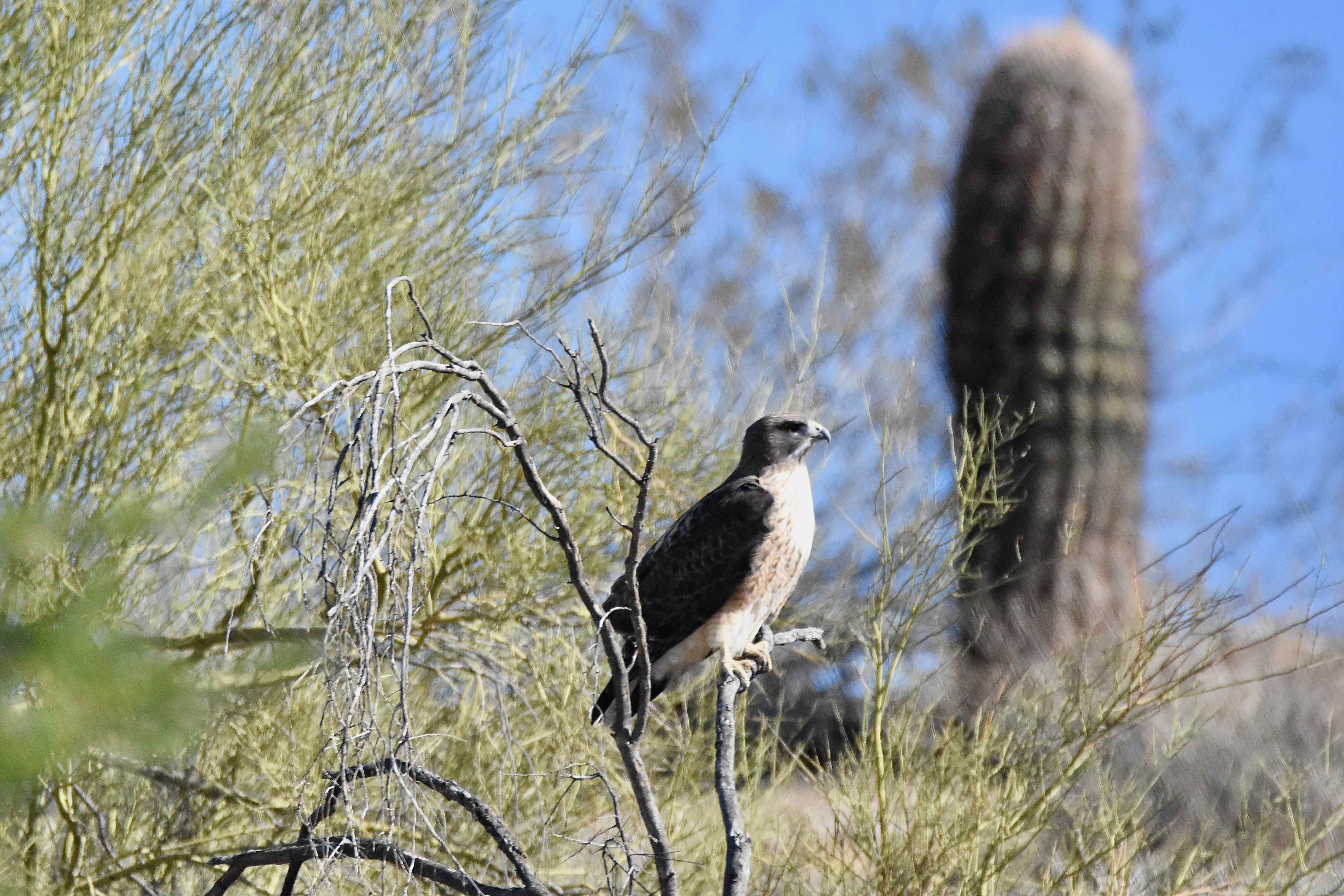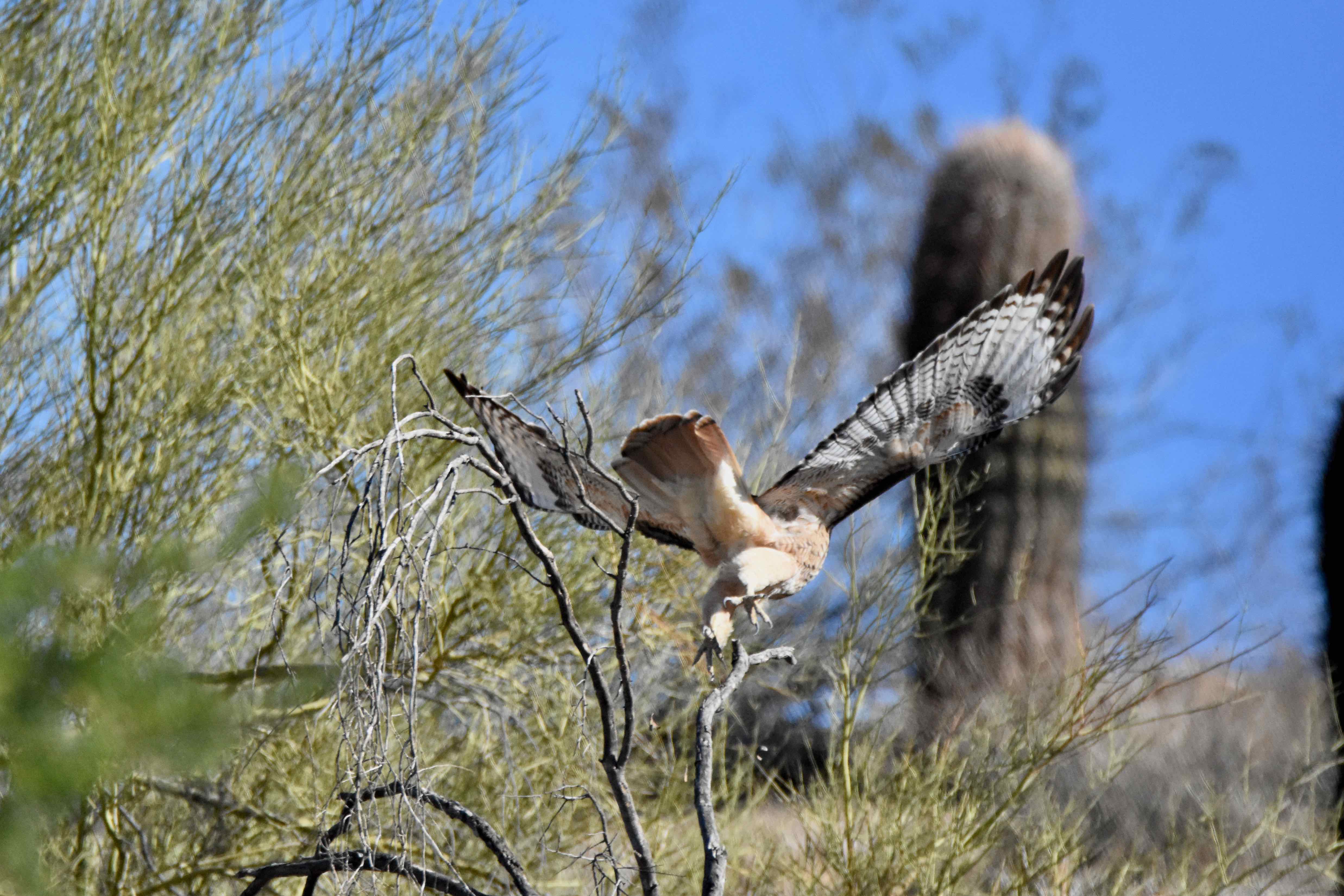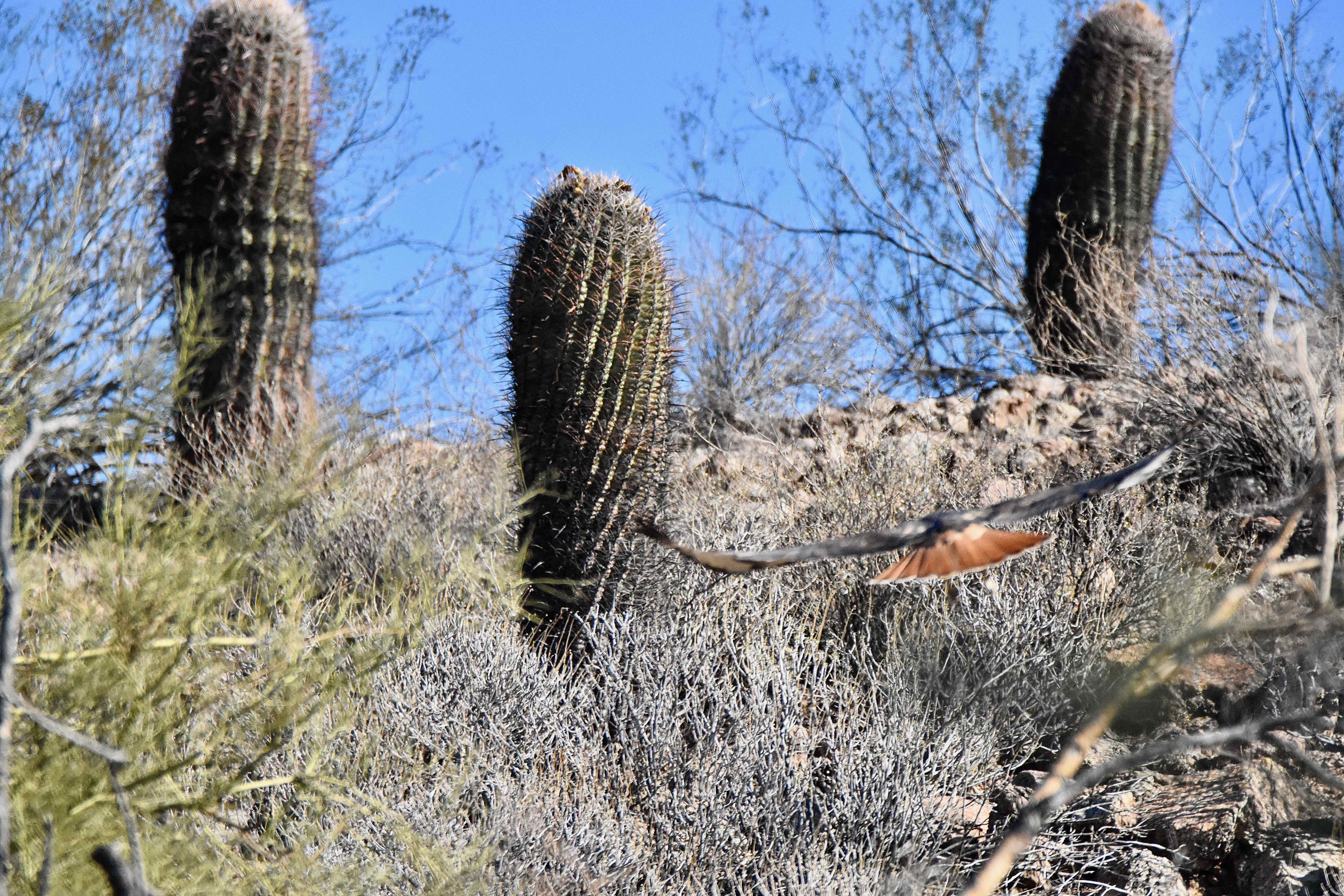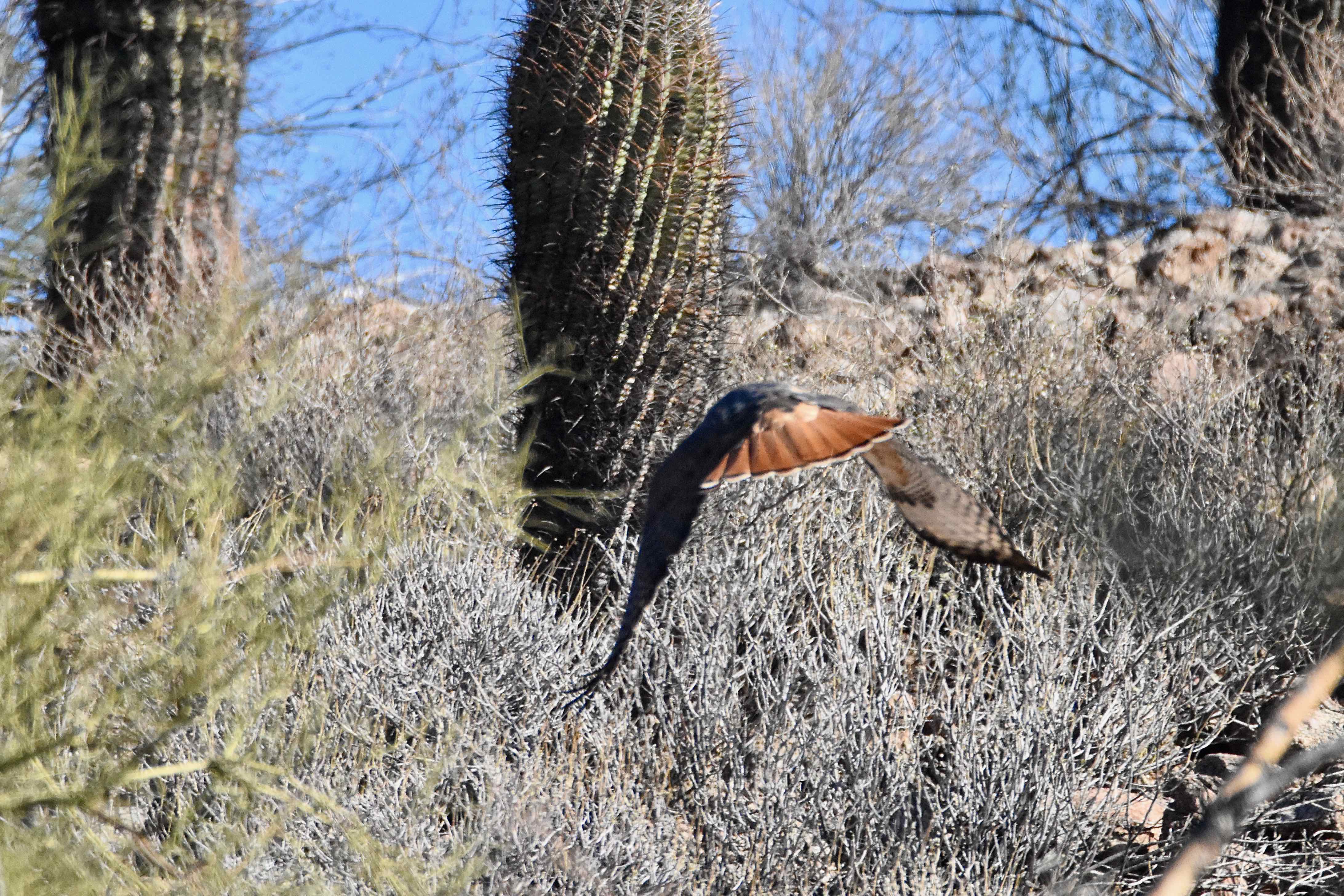
Red-tailed hawk, photographed at Tonto National Forest, Mesa, Maricopa County, Arizona, in November 2016.
Two things announce the presence of a red-tailed hawk, Buteo jamaicensis: its huge size and its distinctively red tail. Even if you've never seen one before, you know instantly what you're looking at if you catch one in flight.
They're common birds throughout North America, found north of the Arctic Circle south into Central America and the Caribbean. They're year-round residents in most of the United States, including Florida. In Alaska and Canada, red-tailed hawks are migratory, spending summers up north, flying south into central U.S. for the winter. Some also migrate into parts of Mexico.
Red-taileds are widespread in Florida, but can be uncommon in some places. Two subspecies occur, one common in the Panhandle and northern Peninsula, one found in points south. They breed in Everglades National Park, but are considered uncommon within its confines. Red-taileds are Florida's largest breeding hawk.
These birds like open habitats, be it desert, scrub, field or grassland. They're often seen perched on a pole, fence post, tree or, in the case of the photo at left, the top of saguaro cactus, where they can scan the ground in search of a meal. In Florida, they'll also take to the heights offered by a cypress island. But they are highly adaptable creatures — they've been known to live in major cities, including New York. One red-tailed New Yorker became known as Pale Male, made his home in the same building as Woody Allen, and became the subject of a documentary film.
Their diet varies by where they live, but generally speaking, a good meal for red-tailed hawks is usually a small mammal — a rabbit, mouse, rat, squirrel etc.. They'll usually leave pets alone, despite the trepidations of some Big Apple dog and cat lovers. Other menu possibilities: birds, snakes, bats, frogs, toads and the occasional carcus.
As we mentioned, red-tailed hawks spend a considerable amount of time perched on high places where they have an unobstructed view of the ground and can spot a potential meal. When they see dinner (or breakfast, lunch or snack), they'll initiate a slow, controlled dive, swooping in with their legs outstretched, ready to snatch their prey.
Red-tailed hawks are huge as hawks go, with the ladies larger than the guys (like many raptors). A female red-tailed can exceed two feet in length, with a wingspan of more than four feet. Males will hit 22 or 23 inches long, with a wingspan also exceeding four feet. By contrast, a red-shouldered hawk will max out at two feet in length and a wingspan of about 44 inches. Colors are the same on both sexes.
Generally speaking, red-tailed hawks are dark brown above, light-colored below, with some light brown streaking on the underside. The tail is a bright reddish-brown, different from the rest of the body. But red-tailed hawks can vary greatly in color — there are as many as 14 variants, or subspecies, that range in appearance from nearly black to nearly white, and some even lacking the red tail.
Red-tailed hawk pairs bond for life. They will pick a high point, usually the crown of a tall tree, a cactus, ledge of a cliff, even a power pole as the place to build their nest. Sometimes they reuse the previous year's nest. The nest itself is a mammoth collection of sticks stacked as tall as six feet tall and as wide across as three feet, and lined with with leaves, strips of bark and other vegetation.
Red-tailed hawks in Florida typically begin to nest in February and continue into June. Females will lay as many as five eggs but usually two or three. Both parents will take turns handling incubation duties, which will last four to five weeks.
After the youngin's hatch, dad will fetch the food, which mom will prepare by cutting it into pieces suitable for a smaller mouth. As the offspring mature, the parents will simply drop food into the nest and let the kids have at it.
They will fledge after six or seven weeks and become competent flyers after a couple of weeks more. They might hang with their parents for a few weeks beyond that.
They are members of Accipitridae, the family of hawks, eagles and kites.



